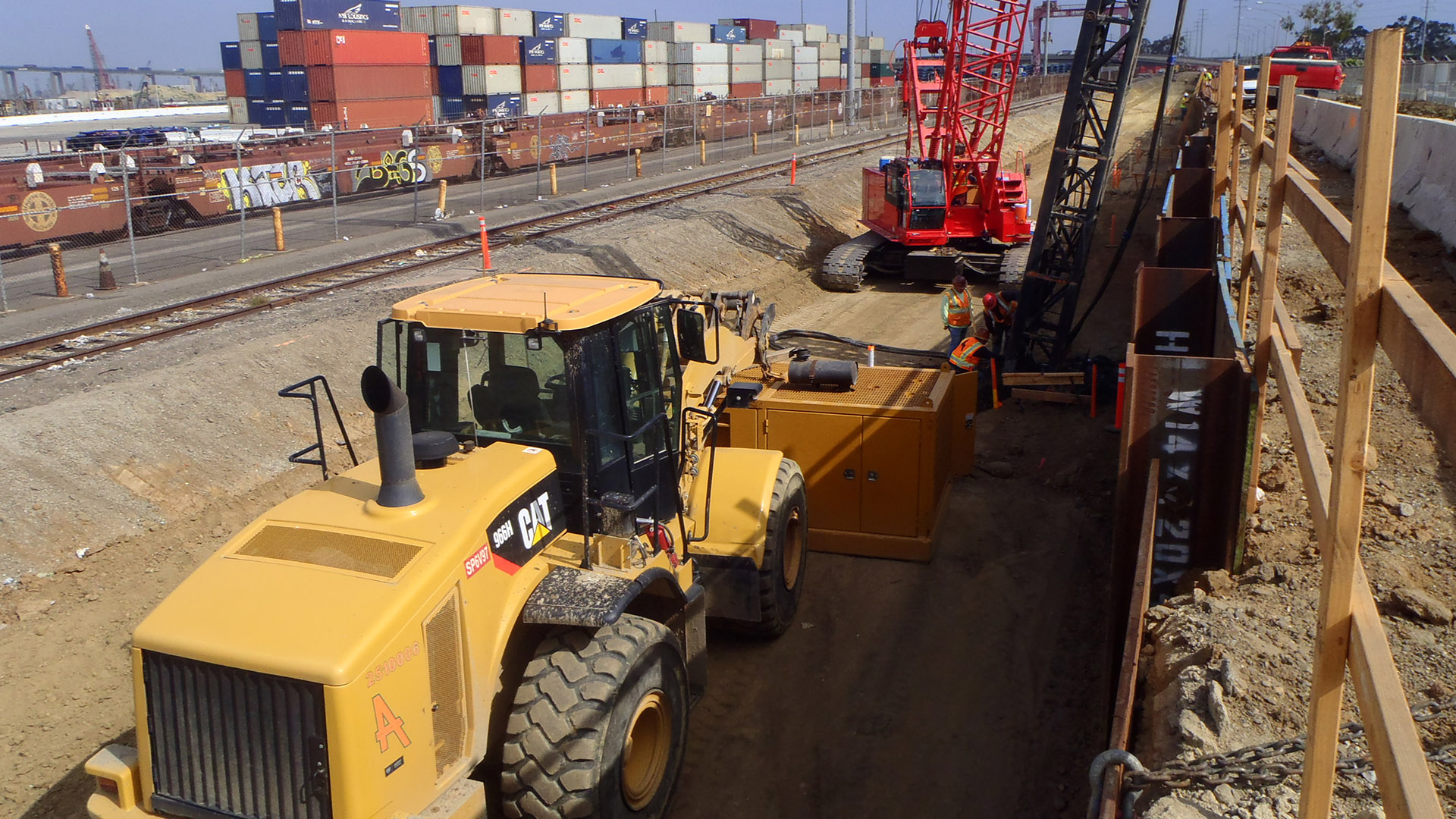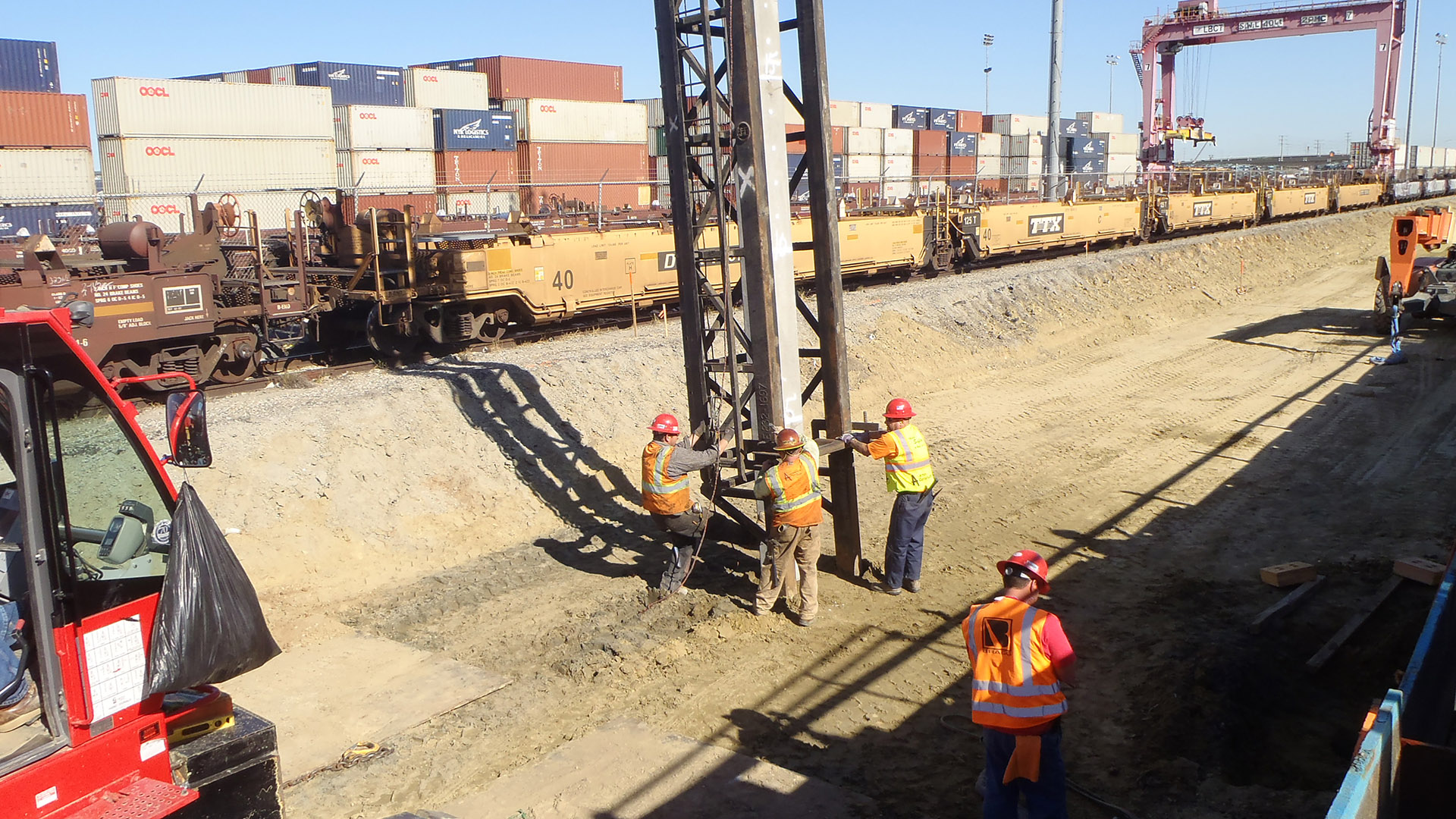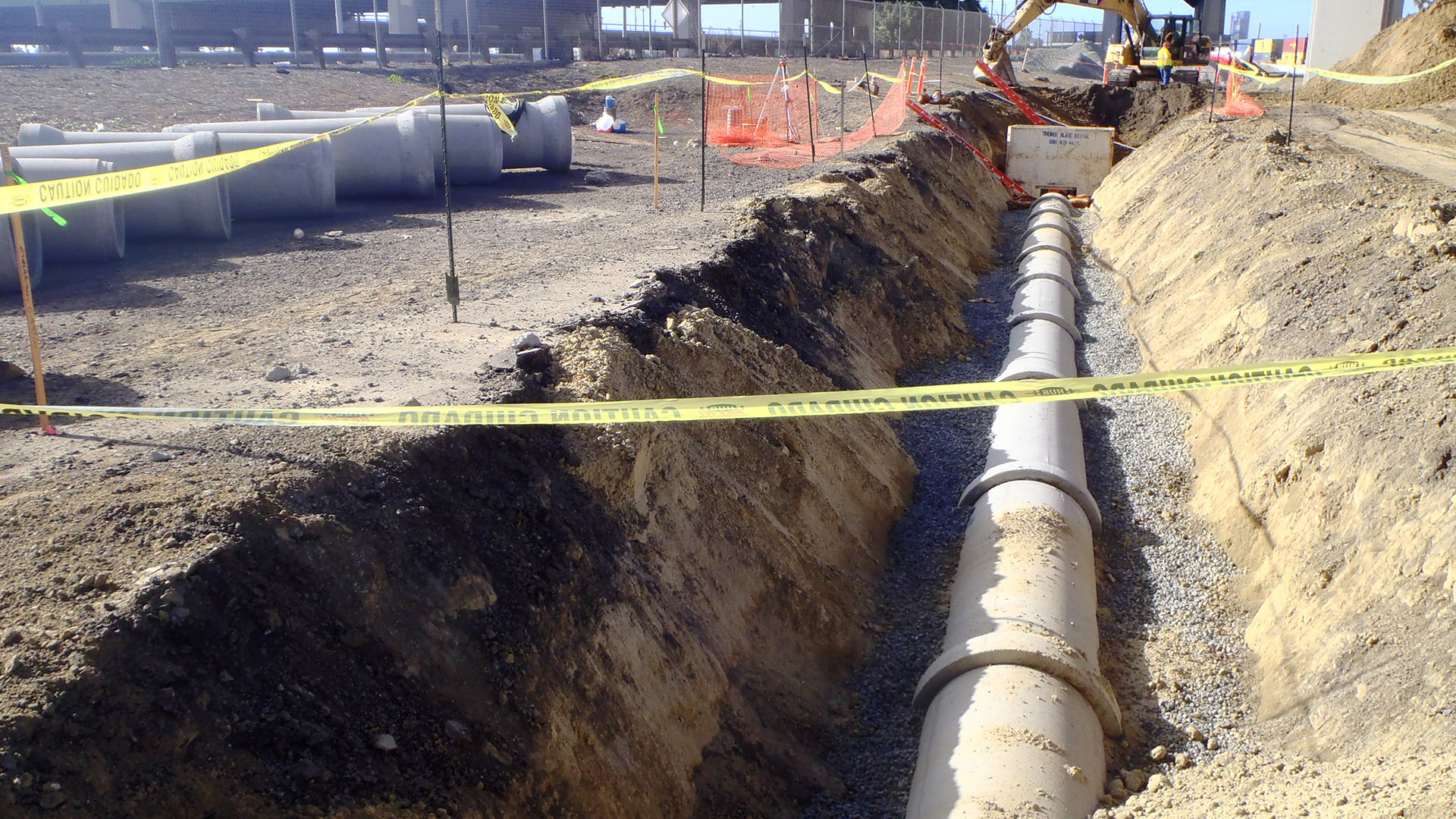Rail
Port of Long Beach
Port of Long Beach
The Port of Long Beach is the second busiest port in the United States, moving $155 billion in cargo annually. RSA crews coordinated traffic control through the congested terminal, with train, truck and boat traffic, to perform capacity improvements to Piers F and P.
Capacity improvements included installation of seven miles of new railroad tracks, asphalt paving, foundations, piping, concrete work and one mile of new retaining wall. Electrical work on the project included the installation of electricity, signals, switch gear and lighting. Water management systems on the project included storm drain systems, waste water systems and water lines. Traffic safety systems included fencing, guard rails and concrete barriers. Other utilities included the construction of a compressed air building with mechanical equipment.
The 580-calendar day contract with 53 milestones and 43 phases made for a tight project schedule. The project was also challenged with the addition of multiple underground utilities found in the locations for new retaining walls and concrete piling.


